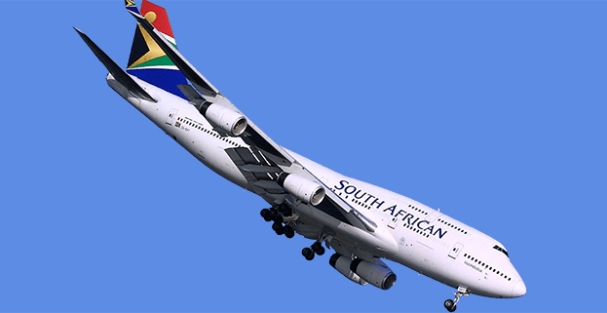With the airline bleeding cash and unable to guarantee wages, business rescue seems to be the only option available
Even if government gives bankrupt national carrier SAA the R2 billion it needs to pay salaries and stay in the air until December, it will probably not be enough to prevent the company from being placed in business rescue.
This was according to business rescue practitioners whom City Press’ sister publication, Rapport, spoke to.
Striking workers who celebrated their acceptance of SAA’s 5.9% wage increase offer on Friday afternoon, bringing an end to the strike, may also find their victory to be short-lived.
In fact, it could be the last decision that government, the public enterprises minister, SAA’s board of directors and its acting management make in respect of the beleaguered airline.
Trade union Solidarity told Rapport on Friday that the end of the strike had no bearing on its court application to place SAA under business rescue, adding that it would request an urgent court date for December.
Louis Klopper, an experienced business rescue practitioner who is also responsible for, among others, the rescue of Gupta companies, said business rescue was a far-reaching intervention.
The shareholders – be they the Guptas or the South African government – lose absolute control of the company, and the business rescue practitioner alone decides on the way forward. Only creditors vote to approve the business rescue plan.
In addition, Klopper said that government and SAA had limited grounds for opposing Solidarity’s application.
He said that SAA, as a company, was subject to the Companies Act, which requires all business to be solvent and liquid.
If not, the company either has to be placed in business rescue or must close its doors and be liquidated.
According to Klopper, the test for solvency of a company is whether its assets exceed its liabilities. The liquidity test is whether the company can comply with its financial obligations over the next 12 months.
SAA fails both these tests.
Even if government were to give SAA the R2 billion bailout and make provision for paying R9.2 billion of the airline’s legacy debt over the next three years, the carrier would still not be solvent, said Klopper.
SAA did not own its aeroplanes but leased them, and had few other assets to balance out its debt of R20 billion, he added.
Aviwe Ndyamara, a business rescue practitioner from Tshwane Trust, agreed that it would be difficult for government to oppose the application, saying that if government argued that SAA was not in financial distress, it would have to prove this.
Merely giving the company more money would not necessarily be enough, he said.
If business rescue was approved, , added Ndyamara, an independent business rescue practitioner would be appointed to look at the business on a purely commercial basis.
DA MP Alf Lees said on Friday that government might well give SAA R1 billion from the country’s contingency fund, in addition to its undertaking to assist the airline in obtaining a further R1 billion loan from banks.
The political consequences of the government losing control over its own company would be far-reaching.
Dirk Kotzé, a political science professor at the University of SA, said given the fact that SAA was not an essential entity, the government might be secretly relieved that somebody else was taking over the ailing airline.
However, he added, government could fight much harder if something similar was attempted with Eskom.
The business rescue practitioners must hold an initial meeting with SAA’s creditors within 10 days, subject to court approval, and then deliver an opinion on whether the airline can be saved.
However, Charl Kocks of Ratings Afrika questioned whether there was proper record-keeping at SAA, given that the airline had failed to publish financial statements for the past two years as it was not a going concern.
Kocks said a business rescue practitioner might struggle to obtain reliable information within 10 days.
If the practitioner – at the creditor’s meeting or at any point thereafter – believes that the business cannot be saved, the Companies Act requires him or her to ask the high court for a liquidation order.
Another option would be to attempt to stabilise the company and then sell it to a private buyer, as is currently the case with the Gupta-owned companies.
In either case, however, the end-result would see taxpayers no longer having to cough up for SAA.
Klopper said it could take years to implement a business rescue plan.
As long as the process continues, the practitioner remains in full control of the business. He or she can replace directors and management and suspend contracts. Furthermore, creditors would not be able to go to court to collect outstanding debts.
Klopper said that although creditors and employees would be protected during business rescue, the practitioners could renegotiate contracts to the benefit of all parties. This would include wage agreements, and could even lead to retrenchments.
The agreement that unions concluded with SAA on Friday guarantees that there will be no job cuts until January 31 next year.
With an increase of nearly 60% more than inflation, the unions have declared victory, even though these increases will only be paid from February as SAA simply does not have cash.
Neither SAA nor the department of public enterprises reacted to requests for comment.

